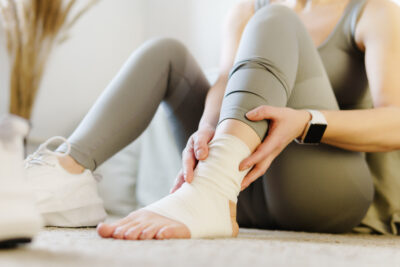Not So Sweet Nutcracker Fracture

The cuboid bone is cube-shaped and connects the foot and the ankle and provides stability to the foot. The cuboid is the only part of the midfoot that supports the lateral column of the foot. The lateral column consists of the calcaneus, cuboid, fourth and fifth metatarsals, fourth and fifth phalanges, and the associated soft tissue. The calcaneus is the largest tarsal bone, which is the heel bone. The 4th and 5th metatarsals are the long bones closest to the outer side of the foot that connect to the phalanges or bones of the two smallest toes.
Cuboid fractures are rare injuries and have an annual incidence of approximately 1.8/100,000 fractures. A cuboid fracture can be isolated, but often is combined with other midfoot fractures. Direct blows or high-energy crush injuries usually cause cuboid fractures. It is often referred to as a “Nutcracker” fracture.
Symptoms of a cuboid fracture include bruising, tenderness, swelling, lateral foot pain, instability, and difficulty with weight bearing. Cuboid fractures have the potential to cause considerable deformity involving the foot arch, lateral column, and the function of the forefoot. It is important to seek medical help immediately. The DOC surgeon will examine the foot after the injury and with the help of X-ray imaging provide an accurate diagnosis and begin treatment. Cuboid fractures are commonly classified by description: stable or unstable, simple or comminuted (more than two bone fragments), intra-articular (break crosses into joint area) or extra-articular, non-displaced (in alignment) or displaced (not in alignment) or crush.
Treatment of a non-displaced cuboid fracture consists of pain management, relative rest, modified activity, physical therapy, and a protective boot with arch support for four to six weeks with weight bearing as tolerated, A displaced fracture may require surgery and internal fixation with wires, plate and screws, bone grafting to restore lateral bone length, and cast immobilization.
Recovery time is variable. DOC physical therapy can help to speed recovery and a guest’s gradual return to pre-injury activities. The cuboid is a vital part of the lateral column, and fractures can disrupt the mechanical alignment and function of the whole foot. It is best to seek DOC medical help as soon as possible after the injury, closely follow the treatment protocol, keep follow-up appointments to re-evaluate healing, and include PT in the healing process.
For more information on the cost of care, click here




